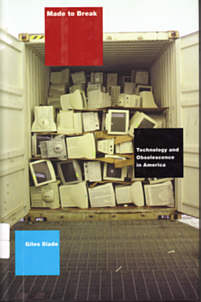 August 31, 2009
August 31, 2009 -- This
month we introduce one very important herb from the Amazon,
discuss a new program to
Private Label for resellers,
and cover up-and-coming products for this fall, including
the re-introduction of
historicals
not available since the
destruction of our
U.S. lab in 2003.

" I have a saying, the shorter the name,
the more important the plant. Some once
believed to be the greatest medicine of all."
 James A. Duke James A. Duke [ 7 ]
|


Anywhere in the Latin world,
"ajo" means "garlic." But in the Ecuadorean orienté, it can also
mean "garlic-vine"
(Mansoa alliacea L.).

I first became fascinated
with this stringing vine because its leaves and stems are used
by
curadors on a wide variety of seemingly unrelated
conditions.

I've personally witnessed
local shamans use tea from the leaves of the vine to successfully
treat everything from high blood pressure and cholesterol, to
diabetes, to breast cancer. For one prominent shaman I know in
the Amazon, it is his single most prescribed herbal . . . and
in one village in Pastaza, the leaf from this vine is
consumed more than any other beverage, besides, water, chicha
(an alcoholic beverage prepared from yucca . . . which I found
to be an acquired taste), and
guayusa (Ilex guayusa Loes.).

This month, after a number of
false starts, we
formally introduce Ajo Té,
obtainable in an easy-to-use dried tea leaf format.
In extensive experiments of our own,
comparing our own in-house protocol to the way that the product
is successfully made in the wild, we've determined that each
85 g. bag will make approximately 4 gallons of product.
Even if one consumes one quart per day, this is a 16 day supply.

When used therapeutically
in the Amazon, the leaf is consumed at this higher dosage level
for about three months. So . . . even at this high level of
consumption, one would need no more than six $9.95 bags to
complete one therapeutic cycle.

We advise customers
to
read the product page carefully,
and if you have any questions, please
email us.
Our New
Private Label
Department

Over the years we have frequently
obtained inquiries from practitioners, resellers, health product
distributors . . . even church pastors, to obtain one or more
of our products under private label arrangements.

Cathryn and I have a long
history of working under private label arrangements -- something
I began doing shortly after I founded Lumen Foods
(
soybean.com).
Moreover, many of you know that we have worked the other way.
(Of the 350+ products we carried at the time of the FDA
pre-planned destruction of our U.S. lab, only 50%
were manufactured in one of our own facilities.
The rest were purchased in bulk and we re-packaged,
or we simply had our own labels attached.)

Nonetheless, often the
first steps by a querant are awkward. Many don't know what
questions to ask or how to go about it.

To make the first step
as smooth as possible, we have created a
Private Label Request Form,
to take the guess work and awkwardness out of the process.

As always, if you still
have questions, you can always use the
regular email form.
Up And Coming
New Products

We are frequently asked
what new products we are introducing, especially since many of
our best products have not been available since
the raid.

Below we provide an update:
 Cansema® Dentifrice
Cansema® Dentifrice -- Our toothpaste
was very popular before
the raid, and
became even more popular after Colgate Palmolive purchased
Vipont Pharmaceutical and fiddled with the original formula
to the point where it no longer possessed its superior
properties -- (discussed in
Chapter 1 of Meditopia).
 Cansema® With Nuwais
Cansema® With Nuwais -- Both our
original
Cansema® and our Deep Tissue version are used to treat cancers inside the mouth.
(Many remember the classic case of
Kent Estes, one of
our earliest pictorially documented cases. This version is designed to soothe soft
epithelial tissue inside the mouth while Cansema® is working. The Nuwais portion of the formula is
the same as has been used in the Amazon for many generations.
 HRx
HRx -- See
original product page.
We hope to have this product back online within the next 60 days.
 Mashwa for Prostate Health
Mashwa for Prostate Health -- This formula contains an extract
from the flower of Mashwa
(Tropaeolum tuberosum L.) which is used
to successfully treat
prostate cancer by alternative practitioners,
both in the Ecuadorean orienté and in the Andes mountains.
 Doctor Worm Killer
Doctor Worm Killer -- The common name for the plant from which this
formula is derived is called "Doctor Oje" -- no kidding [
8 ]
. . . Among my friends in
the Shuar shaman community, it is known as "Leche de
Oje" (
Ficus insipida Willd.) It is so effective at killing parasites,
that it has this same usage among indigenous peoples from Bolivia to Central America.
[
9 ]




